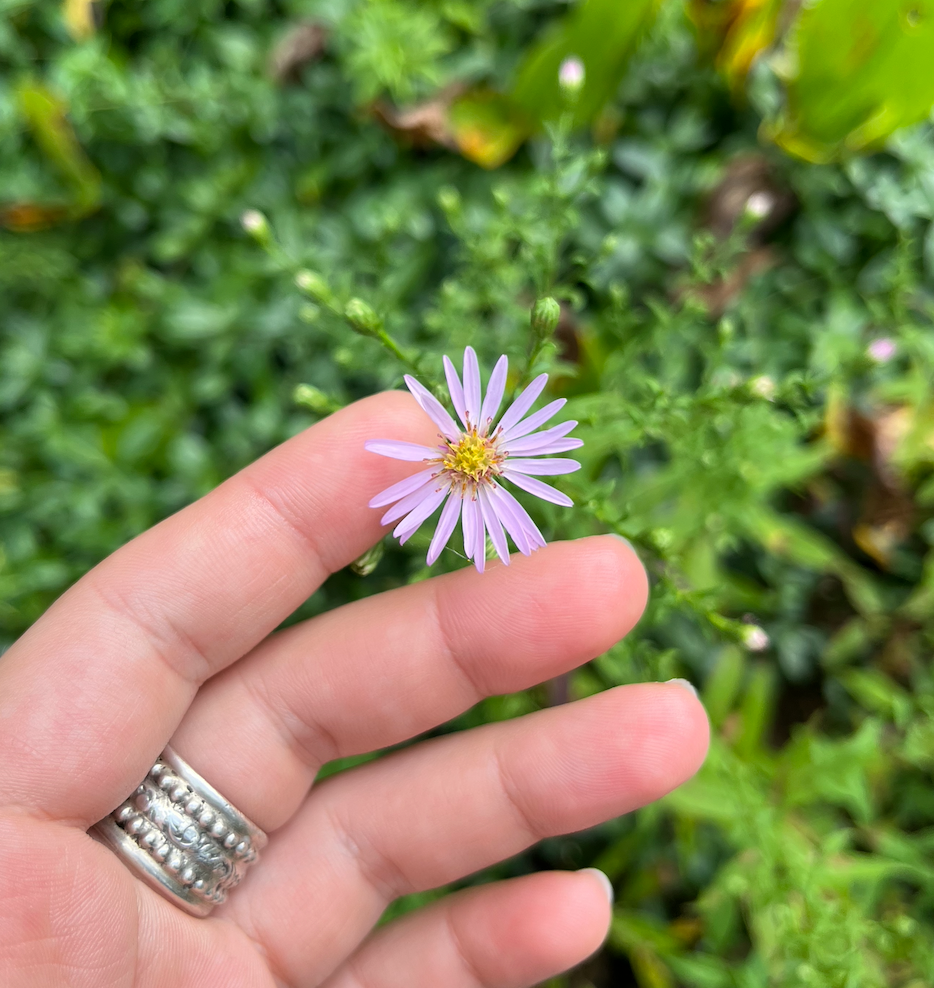
September: Asters
Aster or Daisy?
Asters are often mislabeled as daisies because of their similar petal organization. Both daisies and asters belong to the family Asteraceae which also includes dandelions and sunflowers. There are nearly 200 species of asters all around the world with a beautiful array of colors.
Many flowers in the Asteraceae family have a similar structure, but the way to tell them apart is by their centers. Asters tend to have smaller centers than daisies and denser “florets”, or clusters of petals arranged onto one flower.
Consumption and Medicine
Both the leaves and flowering tops of the aster plant are edible and can be used in salads as greens or as a garnish. The plant has been used most commonly in Native Americans and Chinese medicine.
Research suggests that this late-blooming plant aids in lung and respiratory health. Chinese medicine, along other cultures, have been using the Chinese aster root for centuries. The root aids in minimizing headache pain and can help work as a laxative in the form of teas and powders.
History and Lore
According to the Ancient Greeks, Asters were said to be introduced to the world by the goddess Astria when she looked at the sky and saw no stars. She was overcome by the emptiness of the sky and while crying, her tears sprouted asters. Gods’ tears seem to be a favorite origin story for flowers.
The ancient Greeks also believed asters would scare away snakes and evil spirits around the house and would include them in their alters. In ancient Roman culture, burning aster leaves was common practice to drive away evil spirits and serpents as well.
During World War II, asters were part of a ceremonial act of placing on French soldier’s tombs to mourn. Asters have also been depicted in many works of art throughout history, including books, paintings, and poetry. Claude Monet painted a bouquet of asters back in 1880, and Vincent Van Gogh used Chinese asters in several of his artwork creations.
Aster flowers symbolize love, wisdom, patience, faith, elegance, and beauty; but each of their colors have a different nuance in the language of flowers.
The Language of Asters
Purple asters are considered a royal color and symbolize wisdom, beauty, and nobility. They are the most popular color of this flowering plant.
The white aster symbolizes spirituality, innocence, purity, and faith, as most white flowers do in modern culture.
Red aster flowers represent eternal devotion and deep passion.
Pink asters are a symbol of love, kindness, and sensitivity.
A blue aster flower represents faith and stability.
Cultivation
Aster is a genus of perennial flowering plants that have late-season blooms. They grow in a bush-like fashion and can be up to six feet tall! Aster’s are a garden favorite since they’re easy to grow in hardness zones 3 to 8, but can also thrive in zones 9 and 10. Their colorful clusters are a simple way to bring joy to the corners of your garden that you might not want to tend to.
Their numerous blooms make them a pollinator favorite, and they attract bees, butterflies, and birds. Typically, aster flowers bloom from August through the first frost, so now is their time to shine!
|
||||||||||||||